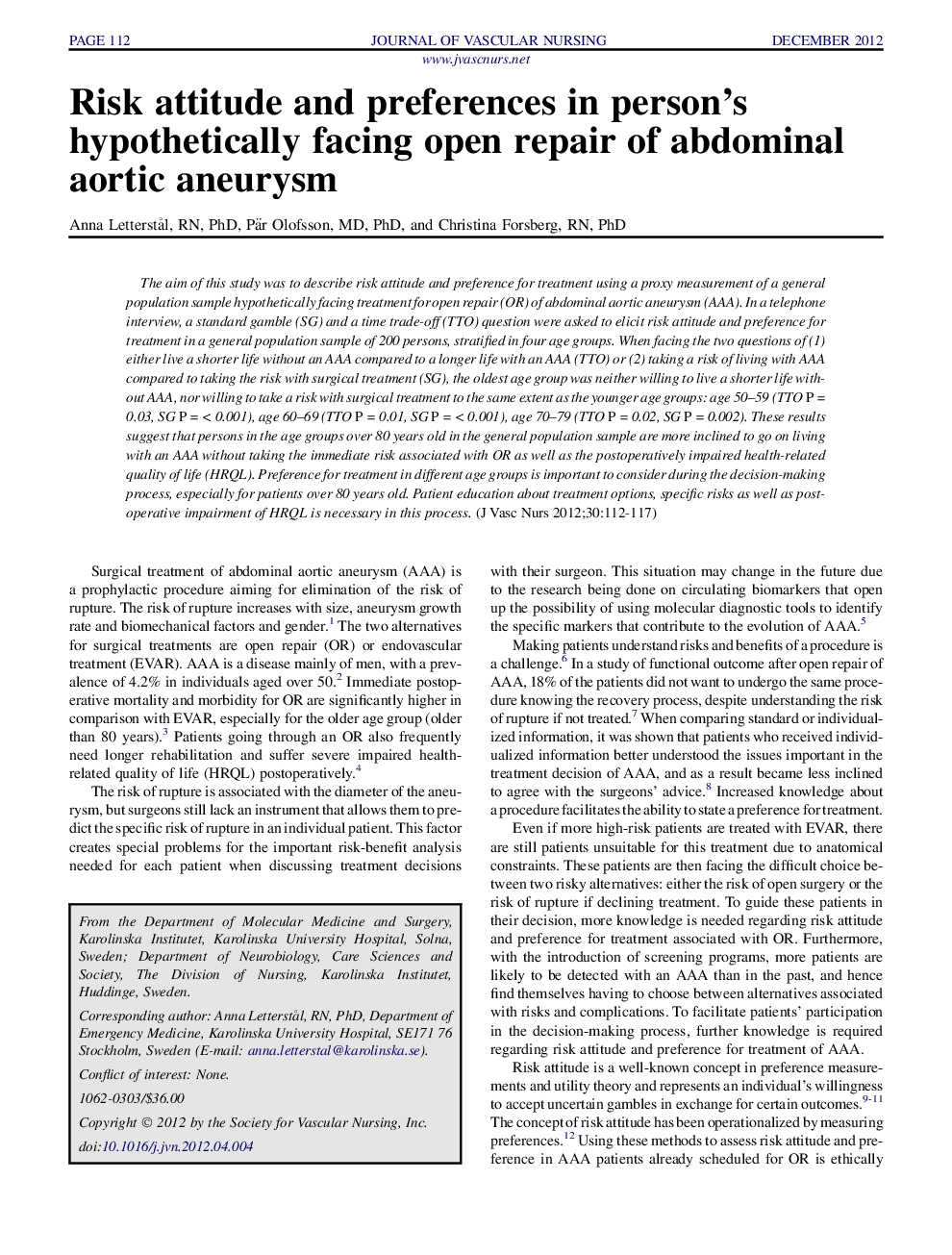| Article ID | Journal | Published Year | Pages | File Type |
|---|---|---|---|---|
| 2672923 | Journal of Vascular Nursing | 2012 | 6 Pages |
The aim of this study was to describe risk attitude and preference for treatment using a proxy measurement of a general population sample hypothetically facing treatment for open repair (OR) of abdominal aortic aneurysm (AAA). In a telephone interview, a standard gamble (SG) and a time trade-off (TTO) question were asked to elicit risk attitude and preference for treatment in a general population sample of 200 persons, stratified in four age groups. When facing the two questions of (1) either live a shorter life without an AAA compared to a longer life with an AAA (TTO) or (2) taking a risk of living with AAA compared to taking the risk with surgical treatment (SG), the oldest age group was neither willing to live a shorter life without AAA, nor willing to take a risk with surgical treatment to the same extent as the younger age groups: age 50–59 (TTO P = 0.03, SG P = < 0.001), age 60–69 (TTO P = 0.01, SG P = < 0.001), age 70–79 (TTO P = 0.02, SG P = 0.002). These results suggest that persons in the age groups over 80 years old in the general population sample are more inclined to go on living with an AAA without taking the immediate risk associated with OR as well as the postoperatively impaired health-related quality of life (HRQL). Preference for treatment in different age groups is important to consider during the decision-making process, especially for patients over 80 years old. Patient education about treatment options, specific risks as well as postoperative impairment of HRQL is necessary in this process.
